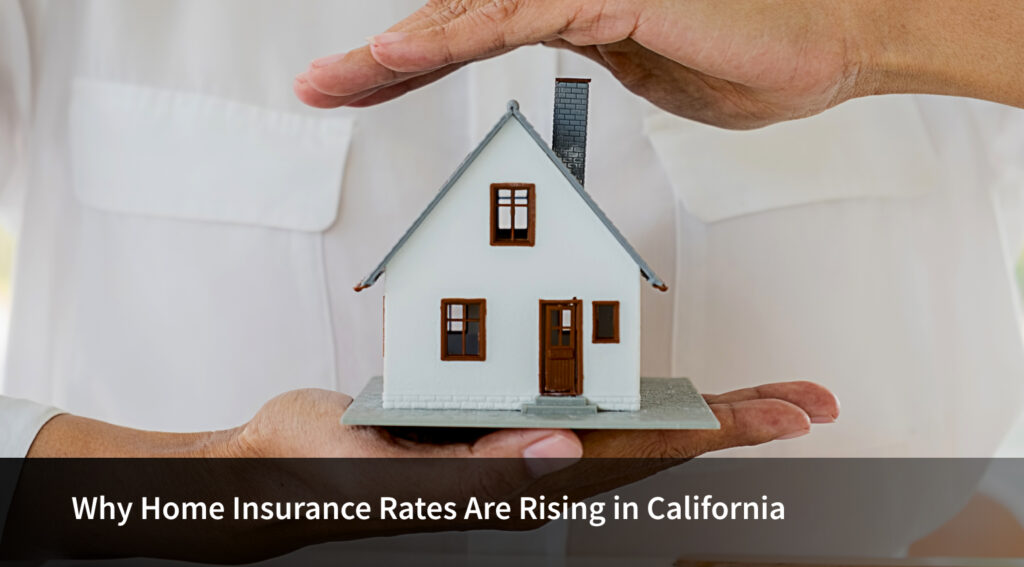
Why Home Insurance Rates Are Rising in California
If you live in California, chances are you’ve noticed your home insurance bill creeping up over the last few years. For some homeowners, the increase has been modest; for others, it has doubled or even tripled. Understandably, this has created frustration and confusion. Why is this happening? And what can you do about it?
In this article, we’ll take a closer look at why home insurance in California is getting more expensive, how it affects both individual homeowners and Homeowners association insurance (HOAs), and what steps you can take to manage these rising costs.
1. The Growing Threat of Wildfires
There is no longer a "fire season" for wildfires. In recent years, California has experienced year-round fire activity, with numerous fires quickly spreading and burning entire neighborhoods. This entails paying out billions of dollars in claims to Homeowners association insurance companies. Insurers increase prices or discontinue coverage entirely in high-risk locations to shield their companies from significant losses.
For homeowners, this means paying more and perhaps having fewer options when looking for Homeowners association insurance.
2. Fewer Insurance Companies in the Market
Several large insurers, including well-known national names, have pulled back from offering new home insurance in California. Their departure has left fewer companies competing for customers. With less competition, premiums naturally rise.
This shrinking market also forces many Homeowners association insurance into specialized or state-backed plans, which often come with higher costs and fewer benefits.
3. The FAIR Plan: A Last Resort
The California FAIR Plan was designed as a safety net for homeowners who can’t get coverage from private insurers. While it helps ensure that no one is left completely uninsured, it’s not a cheap option. The FAIR Plan provides limited coverage and often requires Homeowners association insurance to buy additional policies for full protection.
As more people turn to the FAIR Plan, costs have risen across the board, adding another layer of pressure for California families.
4. Rising Construction and Repair Costs
Insurance doesn’t just cover fire or disaster damage—it covers rebuilding. And in today’s economy, rebuilding is much more expensive than it was even a few years ago.
- Because of a lack of workers, labor prices have increased dramatically.
- Inflation and supply chain interruptions have increased the cost of materials like steel, concrete, and lumber.
- The cost of rebuilding in California may also be increased by permits and restrictions.
Insurers modify premiums to reflect the current market conditions since they are required to cover these increased reconstruction expenses following disasters.
5. Climate Change Beyond Wildfires
Although wildfires garner the most media attention, California is not solely at risk from climate change. There are increasing worries about droughts, mudslides, flooding, and even strong winds. Insurance companies face additional uncertainty as a result of each of these risks. Even in comparatively safe places, insurers raise rates throughout the state in order to spread the expense among households in order to balance the risk.
6. Regulatory Challenges
Some of the most stringent insurance laws in the nation are found in California. Although the intended purpose of these legislation was to shield consumers from unjust rate increases, they also restrict insurers' ability to promptly adjust to rising risks. Instead of waiting months or years for permission to change rates, this occasionally leads businesses to exit the market.
As a result, those who stay face higher premiums and fewer insurance options.
7. Impact on Homeowners Associations
Single-family homes are not the only ones impacted by rising premiums. In California, Homeowners association insurance (HOAs) are also dealing with soaring insurance costs.
This is how communities are affected by that:
- Increased Homeowners association insurance Dues: One of the biggest costs for HOAs is insurance.
- Special Assessments increases insurance premiums.
- To stay within their budgets, they reduced services.
This knock-on effect demonstrates how growing insurance premiums have the power to transform entire communities as well as individual homes.
8. What Homeowners Can Do
While you can’t control wildfires, inflation, or regulation, there are proactive steps you can take:
- To find the best coverage for your circumstances, compare several insurers, according to E360 insurance.
- E360 insurance combines home and auto insurance with the same company often leads to discounts.
- Strengthen Your Home
- It's possible to inquire about discounts.
- Work With a trusted company like E360 insurance
End of the Line
There are numerous factors contributing to California's rising Homeowners association insurance, home insurance prices, including construction expenses, wildfires, climate change, fewer insurers, and regulatory obstacles. Even though it could be depressing, you can lessen the effects by being proactive and knowledgeable.
The problem is much more difficult for Homeowners association insurance because growing expenses have an impact on entire neighborhoods. Nevertheless, both individual homeowners and HOAs can successfully negotiate this changing insurance environment with careful preparation and open communication.
